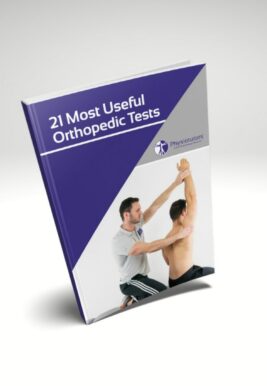Learn
McMurray Test for Meniscus Lesions
According to research by Blyth et al. (2015), the diagnostic accuracy of this test was as low as 63%, which means that only 63% of all patients were correctly diagnosed by musculoskeletal clinicians. Smith et al. (2015) performed a systematic review with meta-analysis a sensitivity of 61% and a specificity of 84%. This means that the McMurray Test is moderately useful to confirm the diagnosis of a meniscus tear in the knee, but weak in ruling out the condition.
To conduct this test, have your patient in supine lying position, with the tested knee fully flexed.
Then, rotate the tibia medially and bring the knee into extension.
You would want to repeat this process a couple of times with a different angle of knee flexion, in order to test the whole posterior aspect of the lateral meniscus.
In order to test the medial meniscus, bring the knee into full flexion and laterally rotate the tibia.
The anterior half of the meniscus is not as easily tested with the McMurray Test because the pressure on the meniscus is not as high.
This test is considered positive if your patient experiences clicking, locking, or pain in the knee.
21 OF THE MOST USEFUL ORTHOPAEDIC TESTS IN CLINICAL PRACTICE

Other common tests to assess for meniscus injuries are:
- Apley Test
- Thessaly Test
- Joint Line Tenderness
- Ege’s Test
- Duck Walk Test
- Finochietto Test
- Bounce Home Test
References
Like what you’re learning?
BUY THE FULL PHYSIOTUTORS ASSESSMENT BOOK
- 600+ Pages e-Book
- Interactive Content (Direct Video Demonstration, PubMed articles)
- Statistical Values for all Special Tests from the latest research
- Available in 🇬🇧 🇩🇪 🇫🇷 🇪🇸 🇮🇹 🇵🇹 🇹🇷
- And much more!








